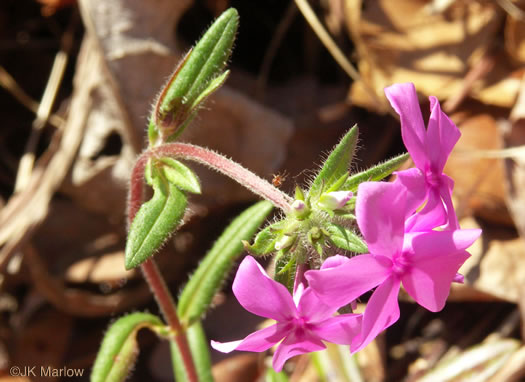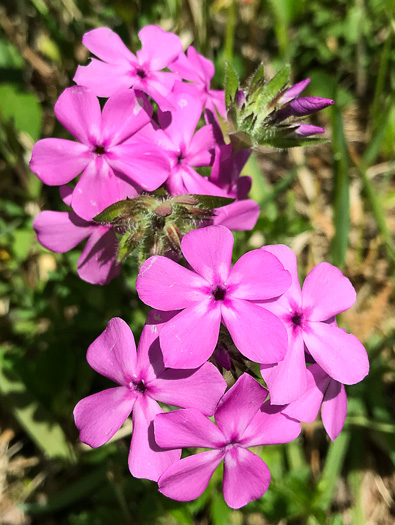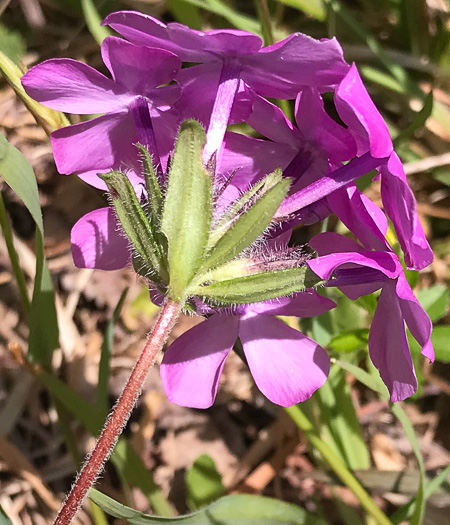Hovering over an image will enlarge it and point out features (works better on desktop than on mobile).
![]() A camera indicates there are pictures.
A camera indicates there are pictures.
![]() A speaker indicates that a botanical name is pronounced.
A speaker indicates that a botanical name is pronounced.
![]() A plus sign after a Latin name indicates that the species is further divided into varieties or subspecies.
A plus sign after a Latin name indicates that the species is further divided into varieties or subspecies.
Most habitat and range descriptions were obtained from Weakley's Flora.
Your search found 2 taxa.
Clicking ![]() one takes you to more information and/or pictures.
one takes you to more information and/or pictures.

![]()
![]() Common Name:
Hairy Phlox, Chalice Phlox
Common Name:
Hairy Phlox, Chalice Phlox
Weakley's Flora: (4/24/22) Phlox amoena FAMILY: Polemoniaceae
SYNONYMOUS WITH PLANTS National Database: Phlox amoena ssp. amoena FAMILY: Polemoniaceae
INCLUDED WITHIN Vascular Flora of the Carolinas (Radford, Ahles, & Bell, 1968): Phlox amoena 159-01-005 FAMILY: Polemoniaceae
Habitat: Dry woodlands and forests, roadbanks, longleaf pine sandhills
Common (uncommon in Carolina Piedmont, rare in Coastal Plain)
Native to the Carolinas & Georgia

Common Name: Lighthipe's Phlox
Weakley's Flora: (4/14/23) Phlox lighthipei FAMILY: Polemoniaceae
SYNONYMOUS WITH PLANTS National Database: Phlox amoena ssp. lighthipei FAMILY: Polemoniaceae
INCLUDED WITHIN Vascular Flora of the Carolinas (Radford, Ahles, & Bell, 1968): Phlox amoena 159-01-005? FAMILY: Polemoniaceae
Habitat: Longleaf pine sandhills, other dry to moist sandy soils
Rare
Native to South Carolina & Georgia
Your search found 2 taxa. You are on page PAGE 1 out of 1 pages.




